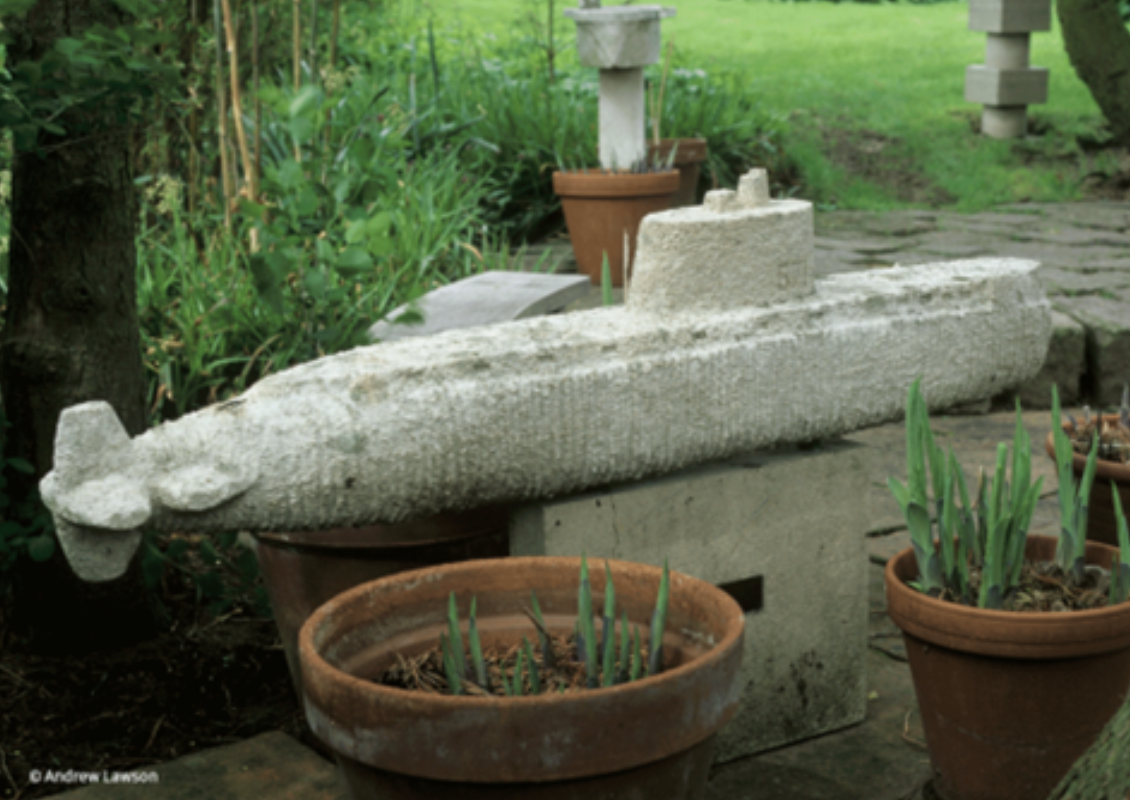Mile to Mile: Scottish Landscape Art
By Brynn Gordon
‘That’s another thing we’ve learned… map-making. But we’ve carried it much further than you. What do you consider the largest map that would be really useful?”
“About six inches to the mile.”
“Only six inches!...We very soon got to six yards to the mile. Then we tried a hundred yards to the mile. And then came the grandest idea of all! We actually made a map of the country, on the scale of a mile to the mile!”
“Have you used it much?” I enquired.
“It has never been spread out… it would cover the whole country… So we now use the country itself, as its own map, and I assure you it does nearly as well.”
…from Sylvie and Bruno Concluded, by Lewis Carroll, 1893.
Lewis’s Carroll’s paradox of the “complete” map, seen above, is simple: a perfectly accurate scale map would be useless to anyone looking to get a bearing on their surroundings. However, “complete” landscapes have long been pursued by artists and gardeners, as both aim to create a fully realized vision that invites viewers to get lost. This is where landscapes as maps fail in their function, and where landscape art can shine.
Two such landscape pieces, both within reasonable visiting distance of St Andrews, that illustrate the potentially for “complete” landscapes are Charles Jencks’s Landform (2001) on the lawn of Edinburgh’s Modern One Gallery, and Ian Hamilton Finlay’s magnum opus Little Sparta (1966-), located at Stonypath Farm just outside of the city.
Jencks’ Landform at Modern One shows exactly what one can do with a smaller plot. Commissioned to fill the space between Edinburgh’s Modern One and Modern Two Galleries, the sloping lawn visually ties the buildings together while hiding the road that bisects the plots from view. The sloping, stacking effect of the ridges follows the scientific principles of Jenck’s landscape and architectural works. “Chaos theory, fractals” and the so-called “butterfly effect” in nature are explored through his repeating forms and gently rounded crescent lakes.
Charles Jencks, Landform, 2001, Grass and Water, Edinburgh Modern One.
Landform condenses the echoing rhythms of a sweeping landscape onto a microcosmic scale, creating a simple, relaxing environment half-way between a mountain range and a stately lawn. Sheltering the museum from the street and amplifying the geometric elements of the Modern One building - a serious Neo-classical rectangle - the green grass, blue of the sky, and wandering swans reflect the lightness and creative spirit of the gallery in the landscape.
Charles Jencks, Landform, 2001. Own photo showing the wild compositional elements Jencks’ lakes attract .
In the same vein, but on a much grander scale, is Ian Hamilton Finlay’s Little Sparta. Unlike Landform, which is essentially a landscaped statue, Finlay created Little Sparta over 25 years to house his workshop: two neo-Roman temples he created and over 250 of his artworks. Each of these elements is situated in a “specific landscape…[of] distinct areas within the garden, each with its own character and mood”, making the entire space a living, breathing manifesto of Finlay’s conceptual work. Classical aesthetics and myths meet enlightenment philosophy and meditations on modern warfare in Finlay’s outdoor work. For example, his stone airplane carrier that looks like a relic from another time. His witty, concise works of poetry engraved on benches and gates are placed in a landscape cultivated to elevate these pieces, but to also stand alone as his personal Arcady.
Ian Hamilton Finlay, Apollo Terroriste, 1987, Gilded Epoxy Resin, Little Sparta.
Ian Hamilton Finlay, USS Nautilus, 1974, Portland Stone, Little Sparta.
Part of his focus on Little Sparta was tied to an intense bout of agoraphobia, confining him to the farm for many years. Perhaps this encouraged Finlay to curate the limited space he occupied into his own world. He created a landscape that inspired calm and contemplation in its intentional planting of leafy trees and shrubs, the snippets of poetry left in fields, and in his unconventional statues. Little Sparta is more than an extensive piece of landscape art; it is a world to explore, a “mile to the mile map” of Finlay’s inner landscape.
Ian Hamilton Finlay, Interactive Map of Little Sparta, 2023, https://www.littlesparta.org.uk/interactive-map/.
Scotland’s natural beauty has inspired countless tributes on the canvas, but there is something fitting about harnessing its wonder as a medium for one’s ideal “complete landscape”. Jenck’s postmodernist hills and ponds and the wandering, shaded paths of Little Sparta show the range of styles and purposes an area of land can embody when it is utilized as a means of expression.
Bibliography
National Galleries Scotland. “Charles Jencks, 1939-2019.” Modern one. January 2023.https://www.nationalgalleries.org/art-and-artists/features/charles-jencks-1939-2019
Heathcote, Edwin. “Charles Jencks, the man who mistook his house for a postmodern manifesto.” Financial Times. September 17th, 2021. https://www.ft.com/content/d75cac9a-ad04-4514-868d-d3e0f610e540
Little Sparta. “Welcome to Little Sparta” January 2023. https://www.littlesparta.org.uk/about/
Artz, Matt, Quote of the Day: Lewis Carroll’s Paradox of the Complete Map, october 28, 2009.https://gisandscience.com/2009/10/28/quote-of-the-day-lewis-carrolls-paradox-of-the-complete-map/





